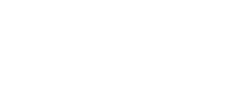2. Safe Practices and Procedures – is intended to prevent transmission of HIV/AIDS from patient to staff, staff to patient, staff to staff and patient to patient.
a. Wash hands thoroughly as often as needed.
b. Follow the disinfection and sterilization guidelines faithfully.
c. Wear gloves, gown, mask and protective eyewear during surgery, child delivery and other procedures where contact with blood or body fluids are likely.
d. Protect any skin disease or injury with gloves or any impermeable dressing to avoid contamination with body fluid.
e. Cover with household bleach (dilution of 1:10) for 30 minutes any spill of blood or potentially contaminated materials then have it carefully wiped off by personnel wearing gloves.
f. Discard immediately used needle and other sharp objects in punctured proof containers marked BIOHAZARDS. Do not bend break needles hand, do not recap used needles.
g. Reusable needles and syringes should be handled with extreme care and safely stored prior to cleaning and sterilization or disinfection.
h. Linen soiled with blood or other body fluids should be handled as little as possible. Gloves and protective apron should be worn while handling soiled linen.
i. Specimens of blood and body substances should be handled as potentially infectious.
Tuesday, July 5, 2011
Tuesday, June 28, 2011
Policies on Reporting Cases of Communicable Diseases
1. All cases of immediately notifiable diseases, syndromes and events seen at the OPD or admitted at the hospital should be reported immediately to MHO, PHO/PESU, CHD/RESU and NEC, with 24 hours of detection by the fastest means possible.
The immediately notifiable diseases, syndromes or events include:
Acute Flaccid Paralysis
Adverse Events Following Immunization(AEFI)
Anthrax
Human Avian Influenza
Measles
Meningococcal Disease
Neonatal Tetanus
Paralytic Shellfish Poisoning
Rabies
Severe Acute Respiratory Syndrome (SARS)
2. Specific ER Personnel should be assigned to attend, to suspected cases, to minimized closed contact and prevent transmission of disease.
3. Initial report can be verbal using the telephone or written via facsimile or e-mail.
4. Fill-up a hospital case-based reporting form using the standard PIDSR case investigation form which will be forwarded immediately to PESU/RESU/NEC.
5. Communicable diseases admitted for some emergency measures should not be kept longer than necessary in the hospital.
6. Arrangement must be made for their transfer with all the necessary precautions.
The immediately notifiable diseases, syndromes or events include:
Acute Flaccid Paralysis
Adverse Events Following Immunization(AEFI)
Anthrax
Human Avian Influenza
Measles
Meningococcal Disease
Neonatal Tetanus
Paralytic Shellfish Poisoning
Rabies
Severe Acute Respiratory Syndrome (SARS)
2. Specific ER Personnel should be assigned to attend, to suspected cases, to minimized closed contact and prevent transmission of disease.
3. Initial report can be verbal using the telephone or written via facsimile or e-mail.
4. Fill-up a hospital case-based reporting form using the standard PIDSR case investigation form which will be forwarded immediately to PESU/RESU/NEC.
5. Communicable diseases admitted for some emergency measures should not be kept longer than necessary in the hospital.
6. Arrangement must be made for their transfer with all the necessary precautions.
Subscribe to:
Posts (Atom)

